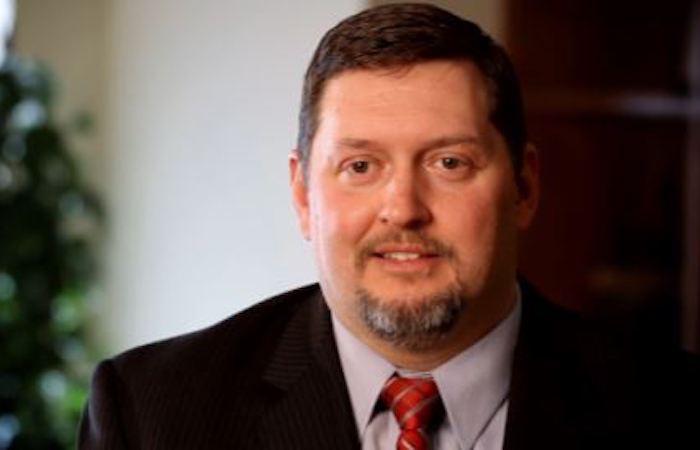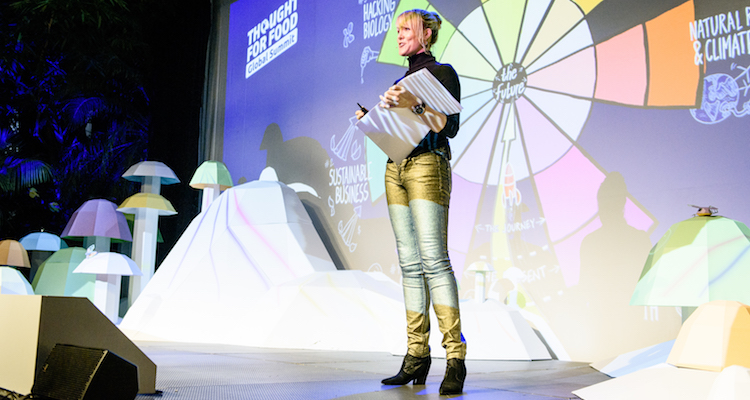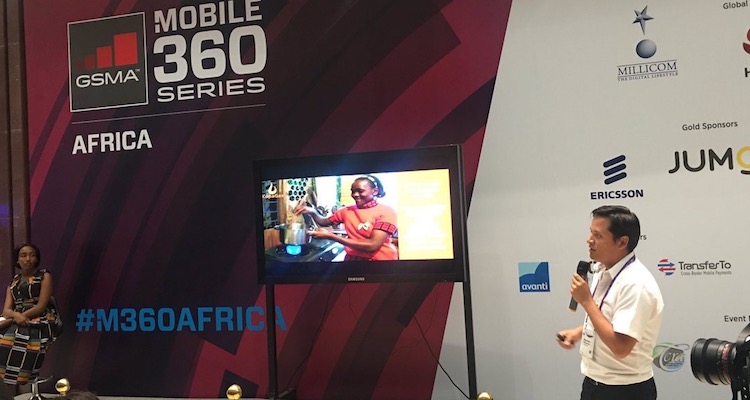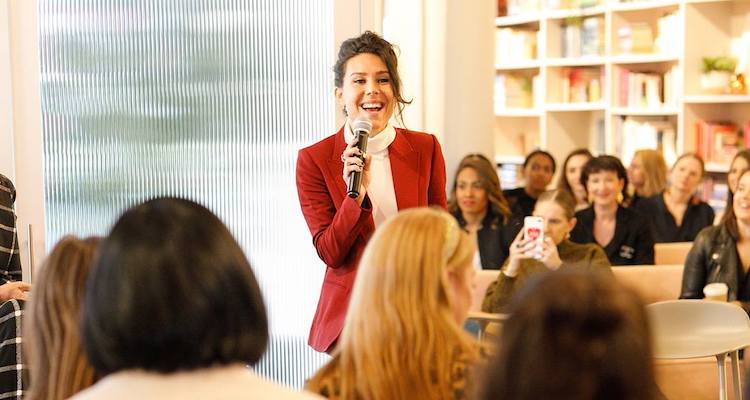Listen Now
We’ve be fortunate enough to have guests on this show from across the entire spectrum of the social sector and from around the world. One of the common issues we’ve talked about is resource scarcity and how that presents both unique opportunities for innovation and challenges in terms of programming, priorities and management. Today, we’re going to look at the other side of the coin and discuss the challenges and opportunities associated with an organization that’s focused on helping solve some of the world’s most challenging problems, but also has scale, and the very real ability to leverage that scale. My guest today is Jamey Butcher, who is an Executive Vice President at Chemonics and currently leads the Strategic Communications and Solutions Division. I’m excited about this episode because I think it really gives a peek under the hood of what is possible within a large development organization. Just to give you a taste, we cover things like: how Chemonics approaches ICT4D, how they are working to make internal communication and learning sexy, the focus of several strategic partnership, the missing middle in impact investing and much, much more. So, with that said, I invite you to sit back, relax and enjoy the 148th episode of the Terms Of Reference Podcast. You can connect with Jamey here: http://www.chemonics.com/OurStory/OurLeadershipTeam/Pages/Jamey-Butcher.aspx https://www.linkedin.com/in/jamey-butcher-8b12073/ Tweets by jameybutcher
IN TOR 148 YOU’LL LEARN ABOUT
- Chemonics, maybe the largest “Intentional Investing” organization you’ve never heard of, with over 4,000 employees on the ground of 80 countries
- Their portfolio of innovation, that mixes thoroughly-tested technologies with cutting edge pilots, always angling for scale and financial profit in addition to social
- How an internal learning solution \ communications platforms became a learning hub, fresh and broadly connected to the internet culture, and may over time award “MicroMasters” to their students
- The importance of academic partnerships, especially when they are ready to overcome their limitations and hurdles, particularly of the bureaucratic kind
- How connectivity has radically changed the game in social research in the last few years
- The existing gaps in the financial-social investment arena
OUR CONVERSATION FEATURES THE FOLLOWING
Names:
- Zipline’s Ryan Oksenhorn
- EdX
- Arizona State University (ASU)
- John Jay College
- Yale University
- IBM
- Fast Company
- Harvard Business Review
- Lean Startup approach in development, iterative building process, canvas
Topics:
- Unmanned Aerial Vehicles (UAVs), drones
- Intentional Investing
- Learning Platforms, Learning Management Systems (LMS)
- MicroMasters
- Supply Chains
- Climate Resiliency
- Community Engagement
- Blockchain
- Cognitive Computing
- Arab Spring
- Portable, connected schools (Wi-Fi + tablets + solar)
Places
EPISODE CRIB NOTES
Chemonics, strategic solutions division
00:03:02,340- I’ve been with Chemonics around 20 years now
- we have this chance to work around the world on some of the biggest and smallest problems that people are facing
- innovation is a challenging topic to talk about
- we work in such a wide variety of settings
- one of the basic things we’re looking at is how can we better connect everybody around the world
- our staff are 4,000 people in 80 country offices
- unmanned aerial vehicles, 3d printing, smartphones and broadband
- two-tier track
- one is really trying to up our game in terms of connectivity
- second, we’re looking at intentional investment around some of those areas
- unmanned aerial vehicles is one potential solution to infrastructure problems
- we were awarded a supply chain contract 18 months ago
- we started talking about how do we get the contract up and running
- at the same time how do we invest in some of the next generation solutions
- drones are one of those technologies that are really exciting because if we get it right we might be able to leapfrog an entire set of problems
- delivering health commodities more efficiently
- then there’s no end to the things that we can begin to deliver in terms of goods to rural and hard to reach parts of the world
Global open hardware conversations
00:07:34,320- we really look at innovation as an open source subject
- yeah we’ve spoken with zipline
- we had a couple of my colleagues go to San Francisco
- watched as they were testing some of their equipment
- it’s a lot of
- the thing they’re doing is still cutting edge
- we want to be a part of it but not as proprietaries
- approaching these big intractable problems as open and and trying to bring in as many potential partners as we can possibly bring in
- at this point you know we’re not sure especially when it comes to UAVs
- we’re actually doing a study right now where we’re trying to assess the the landscape for UAVs
- bring whomever is working in that area around the table
Keeping thousands of partners in sync
00:09:32,090- one of the core investments we’re making right now is EdTech space
- we have amazing people working in remote places and we need to help connect
- not just help, connect with one another in a way that allows us to add value, share knowledge and expertise
- we’ve done a lot of research and testing
- last year at the end of the year have made a about a USD 3MM investment in building out a global wide EdTech platform for our staff
- it’s really focused on peer-to-peer exchange, dynamic content
- exchanging information with each other and getting that kind of content externally
- the space is really beginning to evolve
- it’s not just the the platform
- it’s the way in which we roll it out
- and the ability to provide interesting dynamic content on a regular basis
- there’s no end to the amount of information we’re giving on a daily basis
- we tend to talk about it as if it’s a hub
- but really it’s a very decentralized dynamic space
- we have are a few required training
- they’re not enough to really build a platform around
- you have in one space an ability to connect with your peers, to share, to take your short and long courses whether it’s through EdX or other places and incorporate them into that same app
- we’ve created a strategic partnership with Arizona State
- a certificate program that would allow our professionals to work through our training and then be incentivized to take further trainings that are accredited
- micromasters
- a concept where as you take certificates and you earn them in areas of interest they begin to stack and at some point you complete that study by earning a micromasters
Graduate online education: the longest game
00:17:40,030- we’re very program focused
- investing in something here that not only has benefit for the organization
- this would affect retention levels
- it also potentially contributes out to that broader community
- we encourage risk-taking
- be fearless, take risks, try things out
- move on to the next thing
Diversifying Intentional Investments
00:20:00,169- solution labs
- universities haven’t been as infused in the international development spaces
- they’re spending billions of dollars on research, working almost in the same process as we
- it’s really fascinating that we haven’t been able as an industry to benefit from that research as much as we probably should
- the idea of solutions labs: both organizations look at what is a critical challenge
- we’ve developed four of those labs that
- we were working on something we call a global impact “co-Laboratory”
- we have pioneers from different ways of gathering data that are low-cost and highly replicable
- when we heard about this we said “hey, that really applies to our work”
- a colleague of ours latched onto this
- she’s been working with them, have been to Haiti Mozambique
- in Mozambique we’re working on climate resiliency
- it has a lot to do with community engagement
- if it works, there’s no end to the amount of application this has in our space
- and if it doesn’t work, there’s some other things that will
- we’re working on a low resource setting logistics lab
- we’re just getting started
- it relates to our supply chain work
- we’ve done some work on a youth violence prevention lab
- social media analysis to identify youth who are at risk for violence
- pioneering work with ASU, John Jay College, Yale
- how do we identify the two percent of the youth that contribute to eighty or ninety percent of the violence
- geospace analysis
- blockchain solutions is an enormous emerging area
- blockchain is one game changer
- the focus is on how to provide economic identities to people who have suffered from man-made or natural disasters
- we’re thinking about the application in refugee camps
- but we’re also thinking of it more broadly
- how do we help with access and ownership
- health records through the block chain, through biometric markers
- there’s so much conceptual work being done right now with IBM and so many others
Intentional Partnering
00:26:20,869- when we started what we’re calling “knowledge enterprising” we looked for a university partner
- ASU has been ranked first in innovation for the last couple years
- they’re really willing to break some of the molds that have challenged us as a development organization
- they bring professors from a variety of different colleges and walks of life and expertise
- in a much less siloed way
- an ecosystem of institutions
- Technology Transfer
- they have online learning, one of the leading platforms in the country
- it’s kind of odd that our industry hasn’t really embraced the research agenda that we invest billions in
- one of the consistent challenges of working with higher education is they work at a very different pace
- ASU is able to overcome some of those bureaucratic hurdles
- I’m not going to say it’s perfect but at the same time I think we’ve gone a long way in overcoming
- we have a steering committee that consists of some of the deans and the university leaders
- they really work to address specific issues
- we’ve avoided a couple of initiatives
How Chemonics will change the delivery of assistance in five years or less
00:30:19,960- we’re debating that a lot
- things are changing so fast
- we’re debating is what are those game changers that are emerging right now
- how do we blend them together in a way that is immediately applicable in our work
- and so we’ve picked out eight areas that we think in five or ten years are going to change the landscape of development
- some are actual, kind of no-brainers at this point
- when you combine them together
- you have suddenly this ability to not only interact with people but provide different kinds of goods and commercial opportunities across places
- alternative energy solutions
- we’re talking to IBM and others about
- clinical applications that allow community health workers do their work better in very remote settings
- & some things that are sort of on the edge that haven’t yet been introduced into the space
- virtual reality
- maybe in five-ten years we’ll be able to sit in classrooms together even though we’re in 20 or 30 different countries
- not the concepts but rather the application
- and how do you combine those new technologies in ways that are immediately beneficial to the people
Overnight, while you were sleeping, radical innovation
00:33:22,059- phones have been proliferating around the world for a while
- suddenly social networks have become such an important part of the way people communicate
- interesting applications
- ten years ago we’re trying to get messages out and affect behavior change and just provide good information
- we were working with Lebanon barbers and hairdressers because that’s where people congregated
- in Kenya we were working with rural radio stations
- just 5-10 years ago that was sort of the standard approach
- if you take it to its furthest extreme you can see the Arab Spring and other places where massive disruption has happened
- connectivity is one of the biggest things
- there’s just so much information
- the biggest challenge we face is taking all of these different things and packaging them in a sustainable model
- putting it into a financial and business plan package
- that allows local entrepreneurs and others benefit from it
- to scale and proliferate
- that is really one of the missing links
- we’re working on behalf of the Gates Foundation to commercialize a safe product in Africa to help prevent aflatoxin from occurring
- how do you take these breakthroughs and commercialize them
- get them in the hands of the people who need them
- but do it in a way that’s sustainable
- I want to package this somehow
Overcoming the pilot syndrome
00:38:06,380- when we work with private sector partners, the interesting thing to me is that there are a lot of misses
- but more often than not it’s them who ask why did that happen
- it’s often because we have this initial first meeting
- in the second meeting, typically the financial or executive personnel show up and they ask a lot of hard questions
- there’s a mindset “we don’t know what to do now that we’ve got a pilot”
- “we’re not willing to take the risk”, “we don’t have the investment, we don’t know how to put that package”
- you deal with introducing new products into markets
- you’re a commercial organization
- what do you think the leap is there from commercializing a product
- taking that pilot and putting it out
- the scale process might fail and therefore the investment might go bust
- you see across all of the social impact investing conferences that there’s this huge missing middle
- there’s a lot of investment at the USD 10,000-100,000 level
- that presumably is worthwhile
- then there’s this enormous investment
- when I was working in microfinance in the mid-2000s these large institutions putting hundreds of millions in
- but there’s this big missing middle of viable deals
- I think it is the next space
- taking these technologies and figuring out how to commercialize them
- looking at that USD 1-10 MM space
- and asking how do we package this up in a way that’s lucrative to a social impact investor
- not only receive a social return but also a financial return
- we can’t have a narrow view
- there is a tremendous amount of wealth
Lower your financial expectations a little, to get higher, more vibrant social returns?
00:41:57,350- I was just out in Thailand
- it is a vibrant dynamic economy
- at a global impact network forum in an Amsterdam in november
- I look at the two
- in one hand you have this pool of capital and entrepreneurship
- on the other hand you have a group of social impact investors that are looking for that deal
- the statistics show that the appetite for social impact investing is really growing
- the data shows that there’s this missing middle of deals to actually meet the supply of capital that’s out there to invest
- how can we harness the power of these new technologies and new breakthroughs in a way that creates commercial opportunities
- and if we do that how do we package them in a way that allows us to scale and hand over the technology to the people who need it and will use it
- it really gets at the heart of development itself
- it’s not going to be the Wall Street that is going to solve the problem
- it’s going to be local banks and local investors and entrepreneurs
- they have been developing these innovative breakthroughs themselves
- there’s a company that we’ve been working with
- they’re creating mobile educational Wi-Fi centers
- they’re the size of a suitcase, solar-powered
- you can go to a remote area, you open them up and there are 40 tablets inside
- it’s a self-contained unit the tablets all run on the Wi-Fi that’s generated by the suitcase-type apparatus in a mobile classroom
- it’s an example of one of the innovations that’s being developed
- it’s ready to commercialize
- the appetite for social investing and those kinds of innovations are sitting there ready to be introduced to one another in a way that makes sense to both sides
Jamey’s Picks
00:45:33,140- Fast Company
- Harvard Business Review
- Lean Startup approach in development, iterative building process, canvas
Please share and participate
If you have any questions you’d like to ask me or Jamey directly, head on over to the Ask Stephen section. Don’t be shy! Every question is important and I answer every single one. And, if you truly enjoyed this episode and want to make sure others know about it, please share it now:[feather_share show=”facebook, twitter, linkedin, google_plus” hide=”reddit, pinterest, tumblr, mail”]
Also, ratings and reviews on iTunes are very helpful. Please take a moment to leave an honest review for The TOR Podcast!




